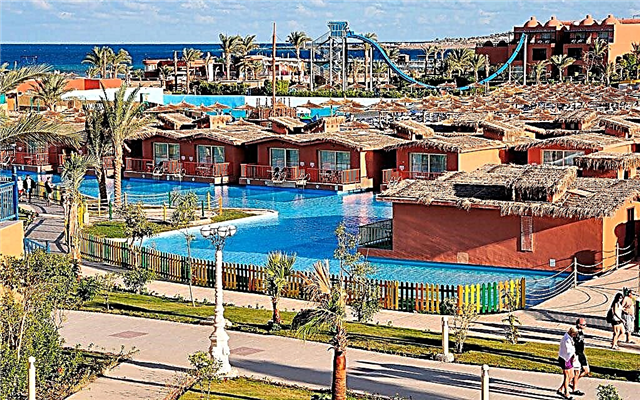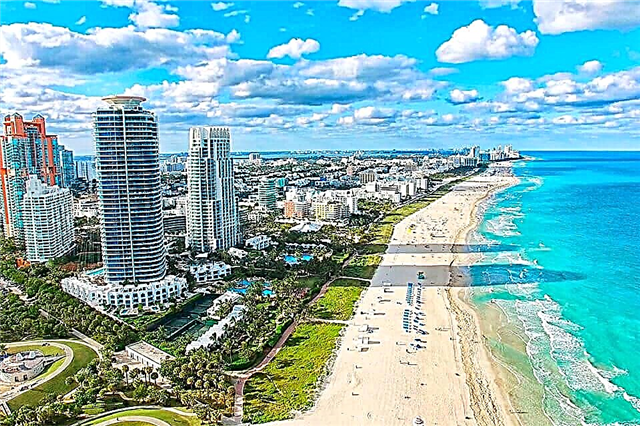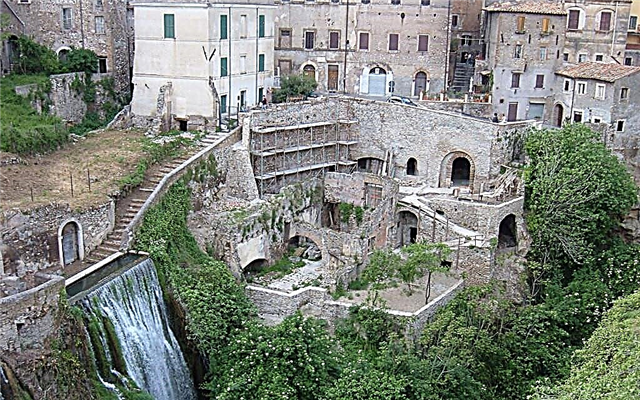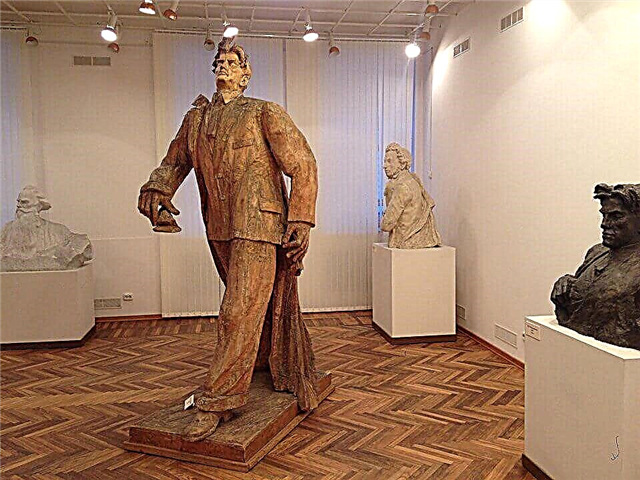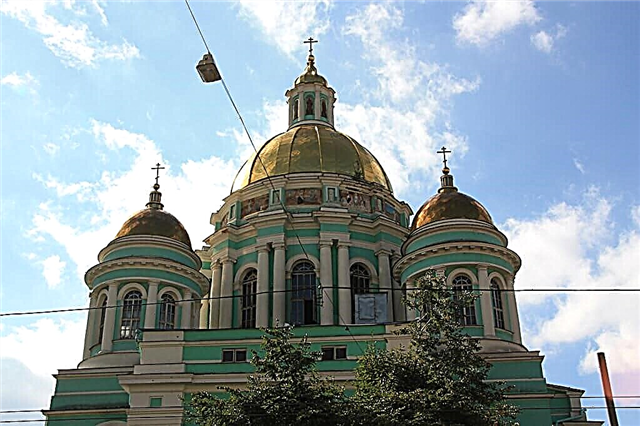The Epiphany Orthodox Cathedral of the Moscow Diocese is known and loved by all Muscovites. Many people remember it from childhood, because it is one of the few places of worship in Russia that has never been closed, services have always been held there.
Construction history
The Yelokhovskaya church has a long, difficult, full of dramatic moments, fate.
Founding construction period
In 1698, the inhabitants of the village of Eloha erected a small prayer room made of wood, a little later, during the reign of Tsar Peter I, a stone structure was erected on this place (1717 - 1722). In the 30s, in honor of the Annunciation of the Mother of God, a side-chapel was added to it. By the end of the 18th century, other annexes appeared - a bell tower and a refectory. But Moscow at this time is growing rapidly, during the service it becomes crowded, people coming from nearby and remote areas of the city cannot get inside.

We decided to start building a new large temple building. The project was prepared by the architect E. Tyurin. There were not enough funds, so the construction proceeded for a very long time, but services were carried out during construction or finishing works.
Subsequent restorations
By 1845, the construction of the main part of the building was completed, which was crowned with five domes. With the help of the parishioners, mainly thanks to the donations of the merchant Shchapov, the church was completed. In 1853 it was consecrated by Philaret, Metropolitan of Moscow and Kolomna.
A few years later, the upper tiers of the bell tower were erected, in the 19th century, a dome was erected on the refectory, and on the side facades - attics. The height from the foundation to the cross and the bell tower is 56 m, the area is 1164 sq. m, can simultaneously accommodate 3000 people.
Modern furnishings

The most significant restoration took place in the late 60s of the twentieth century, which lasted 20 years. A huge painstaking work has been done. The floor was replaced with marble, the gold leaf was renewed, the pulpit was equipped with a bronze fence. The iconostasis was restored, the wall paintings were cleaned and strengthened. Raised the floor under the altar and salt (elevation). Balconies were re-equipped, adding a central one, and a room for singers was allocated. We equipped elevators and conducted a broadcast so that believers could hear the service better.
The facade and roof were repaired. Landscaped territory and reconstructed buildings for living, dining rooms, organized a place for the consecration of water. The restoration was carried out under the guidance of the chosen head - N.S. Kapchuk.
Name history
According to a Moscow legend, back in the 14th century there was a dense alder forest and the Olkhovka and Olkhovets Ruchey rivers (now enclosed in pipes) flowed. As stated in Dahl's dictionary, the name alder and spruce have the same root. Obviously, this gave the name to the village of Elokh, located not far from the forest, known since the reign of Demetrius Donskoy.
It is famous for the fact that Vasily the Blessed, a man who was not afraid to denounce even Ivan the Terrible, was born here in 1469 and lived for long 83 years, pointing out the ruler's cruelty. They accompanied the saint on his last journey with honors, buried him at the Trinity Church on Red Square, which has since received the name of Basil the Blessed.
Architecture

The building was built in the Empire style. The main body is in the shape of a cube, with five domes set at the top. The domes have the shape of a rotunda, in which window openings are installed. The rotunda in the center is adorned with elaborate painting. From the north and south, the building is decorated with pilasters and portals. Above, there are wide semicircular windows resting on two columns. The structure, thanks to its numerous elements, has a light and airy look.
The arches passing through the bell tower make the building graceful and graceful. There are round columns at the corners of the upper tiers. The upper tier is not decorated; a top, covered with gold leaf, and a cross are installed. The inner rooms are connected to the refectory by a small passage. The side facade is decorated with attics, a baptismal was built in the courtyard, in which adults and children can undergo baptism.
Interior decoration
In October 1846, the parishioners applied to the Holy Synod for permission to decorate the interior of the newly built structure. With the help of the parishioners, the interior is richly decorated, the decoration is dominated by golden colors.

The ceilings and walls are richly painted with fine paintings. By 1853, a multi-tiered iconostasis of complex shape, 18 meters high, was erected on the eastern side. The icon painters specially painted 65 images. Entering the room, a person involuntarily looks up - to the image of the New Testament Trinity, depicted in the domed part of the central rotunda.
The majestic rotunda plays a dominant role in the interior, resting on huge supporting arches, which are supported by four-sided pillars and hold the vault. The main altar is dedicated to the Holy Epiphany, there are two more side-chapels - on the left side it is installed in honor of Nicholas the Wonderworker, on the right - in honor of the Annunciation of the Mother of God. The painting of the cathedral walls was made in the first half of the 20th century by masters from Mstera, which is the largest center of icon painting.
Cathedral today
Church life here has always been active, even in difficult times of persecution and oppression. In 1925, at the Meeting of the Lord, with the permission of the Soviet leaders, Patriarch Tikhon held a festive liturgy. The building in 1926 received the status of a “monument of church architecture” of the 1st category. Perhaps that is why it was not destroyed and a movie theater or warehouse was not built.
The new government did not close the center of Moscow Orthodoxy either at the beginning of its reign or in subsequent years, but this threat always hung over the ministers and believers. The first closure order was approved in the spring of 1930. 5 thousand parishioners signed a letter to the authorities with a request to cancel such a decision, and the request, oddly enough, was granted.
In 1935, they decided to re-equip the building and arrange a cinema, but this plan also did not come true. The last time the closure was scheduled for June 22, 1941. On this day, as you know, a war began with Nazi Germany, which prevented the authorities from implementing the decision. Immediately after the declaration of war, Metropolitan Sergius appealed to the parishioners to go to the defense of the Fatherland from the invaders.

On the initiative of the church ministers, a fundraiser was organized for the defense of the country. The Metropolitan set an example - he gave a cross from a cowl and a pectoral cross, richly decorated with precious stones, donating them to the needs of the state in difficult times of war. Despite the attempts of the authorities to close the religious building, constant oppression and persecution, the church ministers helped their country during the four years of the war, collecting more than 835,000 rubles for defense and purchasing gifts for the soldiers of the Red Army for more than 500,000 rubles.
In the spring of 1942, with the permission of the authorities, a service was held on Holy Easter, attended by more than 6,500 believers. Since 1943, Metropolitan Sergius was elevated to the rank of Patriarch of Moscow and All Russia. In 1945, the cathedra passed to Alexy I, who, by decree, conferred the status of Patriarchal on the Epiphany Church (it was retained until 1991). During the Patriarchate, important events for the ROC were carried out - the enthronement of the metropolitans, the transfer of the relics of St. Alexis from the Assumption Cathedral in 1947, and others.
With the divine liturgy performed in the church in 1988, festive events began to celebrate the millennium of the baptism of Rus.For worship, Orthodox shrines were often exhibited - the relics of Seraphim of Sarov, the head of Panteleimon the healer, the “Vladimir” icon of the Mother of God. In 1991, the temple was given the status of a cathedral, in 1992 - a memorial plaque was installed to the poet A.S. Pushkin, who was baptized here.
In 1990, a significant restoration was carried out, the internal territory was landscaped, and various economic services were placed in the nearest houses (after the resettlement of residents). The remains of Patriarch Alexy II are buried here in 2008. Today, the cathedral hosts daily services, Sunday and holiday services, a Sunday school and a church singing class.
Shrines and icons

Light from large windows falls on the images of saints located in a circle - Grand Duke Vladimir and Grand Duchess Olga, Alexander Nevsky, Sergius of Radonezh, St. Michael, Peter, Blessed Basil and many others. The Kazan Icon of the Mother of God, which used to be in the Kazan Cathedral, is especially revered. The main aisle contains icons:
- "Mammal", which was sent as a gift from St. Athos in 1894;
- Mother of God "Seeking the Lost"
- "Deliverance from the troubles of the afflicted" - very rare and ancient
- in the Nikolsky side-altar you can see the unique image of St. Nicholas the Wonderworker
- "Resurrection of Christ"
- In the main aisle - the Monk Seraphim of Sarov
The relics of St. Alexis, delivered in 1947 and met by Patriarch Alexy I. In 1944, Patriarch Sergius was buried in the northern aisle.
Clergy
The clergy of the Epiphany Cathedral changed several times, always protecting the interests of the flock.
In the XX - XXI centuries, the abbots of the cathedral:
- Protopresbyter Nikolay Kolchitsky - from 1924 to 1961
- Protopresbyter Vitaly Borovoy - from 1973 to 1978
- Protopresbyter Matthew Stadnyuk - from 1978 to 2013, Honorary Rector since March 2013
- Archpriest Alexander Ageikin - March 24, 2013

The archdeacons who served here were: Georgy Antonenko (1943-1958); Vladimir Prokimnov (1963-1990); Stefan Gavshev - (1975-1990); Andrey Mazur - since 1990. These people, serving God, defended the interests of the Church in difficult times for her, when she was under pressure from the authorities. Largely thanks to their activities, the temple was able to be defended from closure.
Working hours
Schedule of services on weekdays:
- 08:00 - Liturgy
- 17:00 - Vespers and Matins
Schedule of services on Sundays:
- 06:30 - Early Liturgy
- 09:30 - Late Liturgy
- 17:00 All-night vigil
Baptism on weekdays at 11:00 and 15:00, on weekends - at 09:00, 12:00, 15:00.
The wedding is held on Monday, Wednesday, Friday and Sunday.
Where is it located and how to get there
The cathedral is located at 15 Spartakovskaya Street, in the Basmanny District of the Central Administrative District of Moscow, Russia.
You can get there by metro:
- To the station "Krasnoselskaya", then walk along the street Nizhnyaya Krasnoselskaya. Or take a tram, routes No. 37, 45, 50 to the Baumanskaya stop.
- To the metro station "Baumanskaya", then walk along the streets of Baumanskaya and Spartakovskaya.
- Get to the metro station "Komsomolskaya", then from the stop "Fabrika Bolshevichka" by bus No. 88 or trolleybus No. 22 go to the stop "Elokhovskaya ploshchad".
The Epiphany Church is one of the few in Russia that managed to avoid closure and desecration; services were always held in it. Believers will always find support and understanding here in joy and sorrow.
We recommend the following hotels in Moscow:

